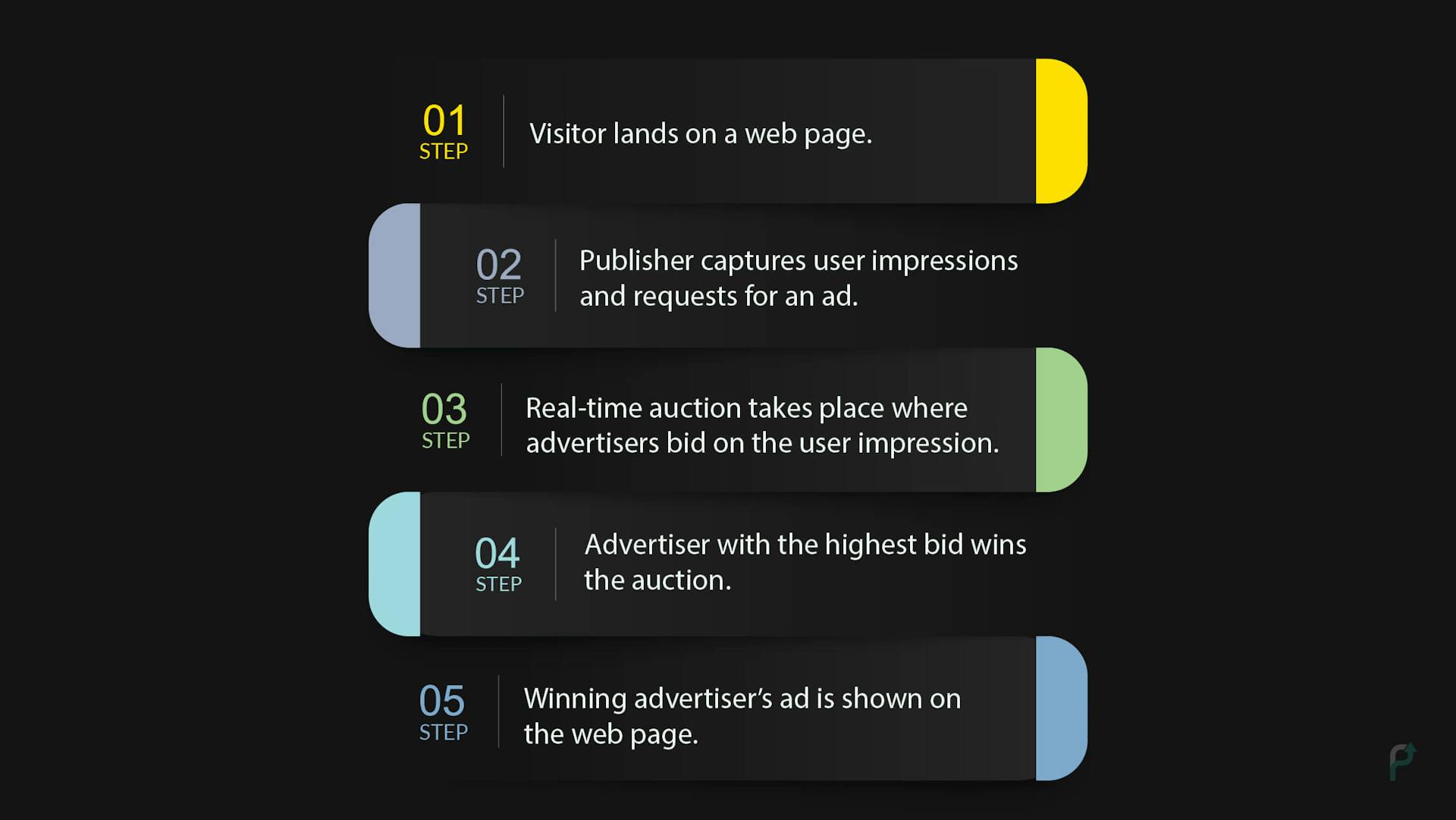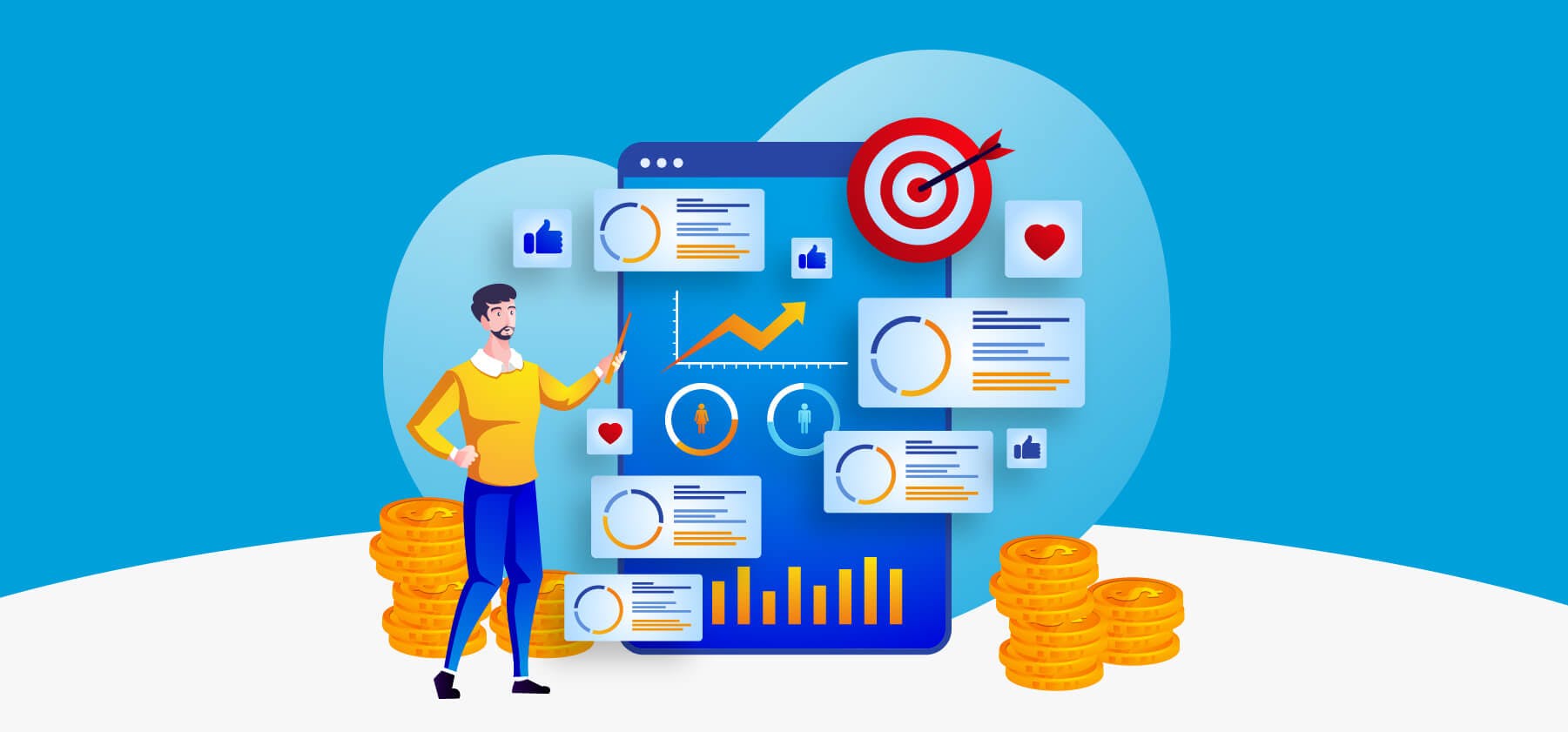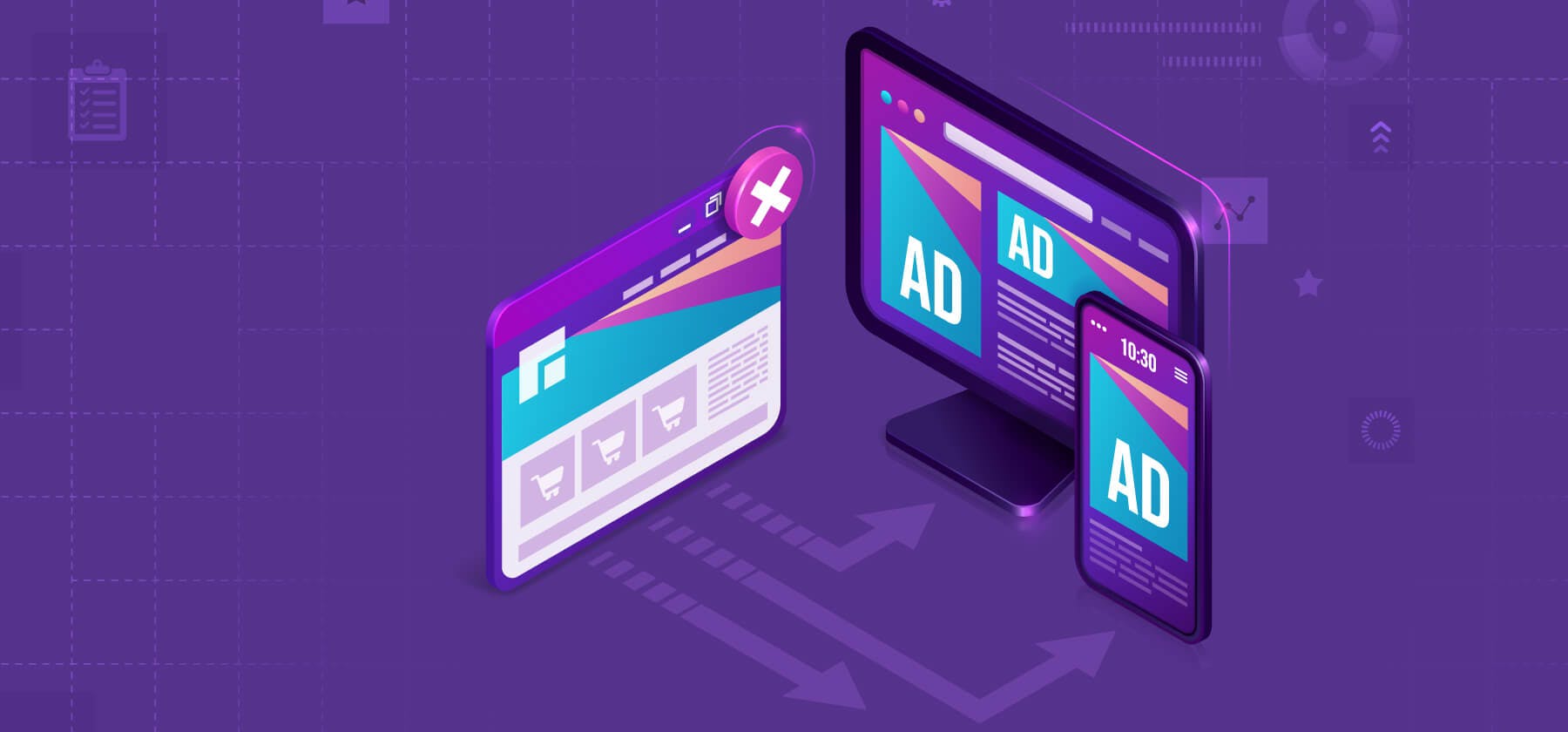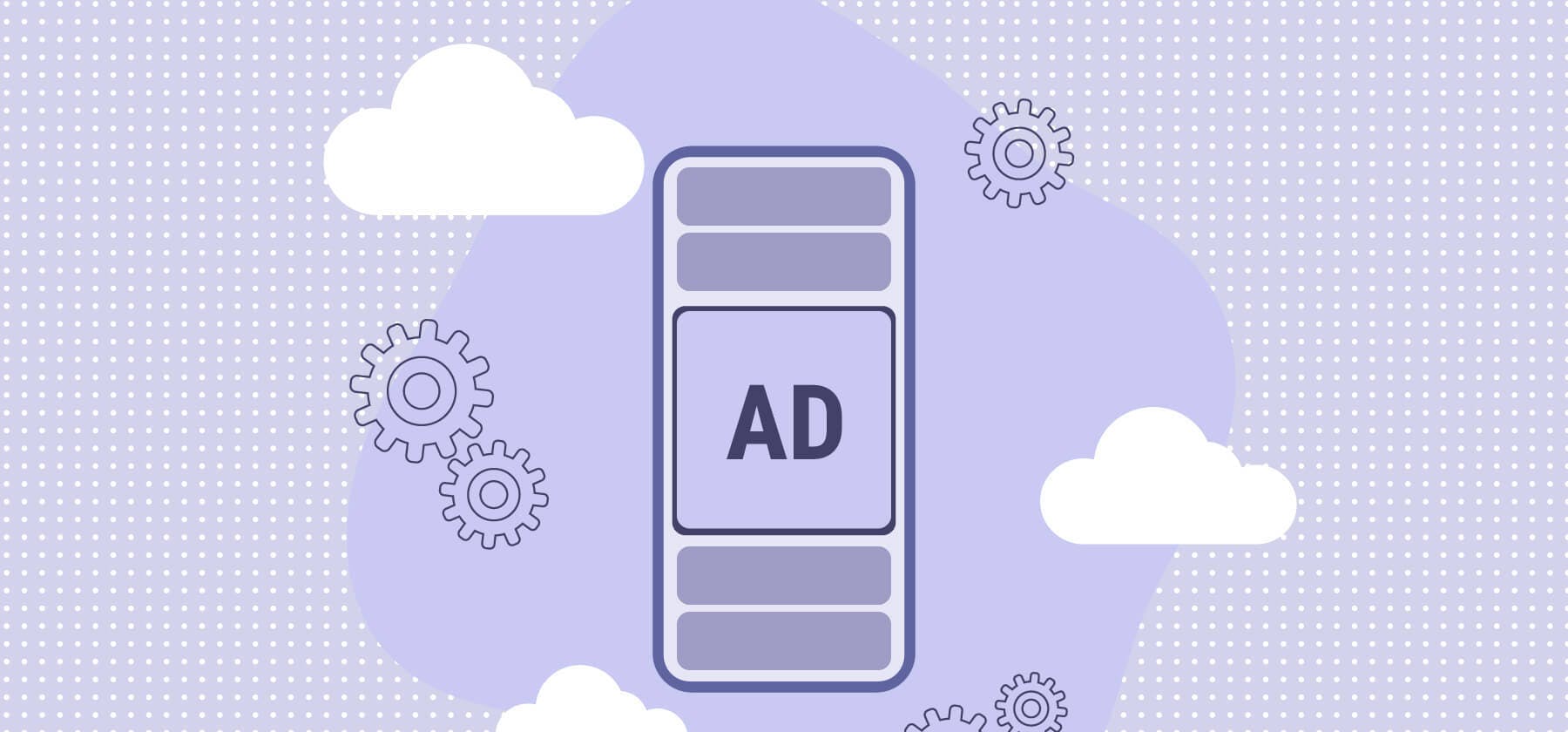The ever-evolving ecosystem of online advertising motivated publishers and advertisers to ditch manually approaching one another to buy and sell ad inventory and switch to automation a long time ago. But recent times have seen a big rise in programmatic advertising platforms as the ultimate solution for trading digital ad space. Who are the top players in the industry? Let’s find out!
What are Programmatic Advertising Platforms
Programmatic advertising platforms facilitate buying and selling digital media or advertising space through real-time auctions. They automate and streamline the entire process from publishers requesting ads to the platform fetching them from advertisers and placing them in the ad space. This downright eliminates the need for human intervention to negotiate deals between publishers and advertisers.
Steps Involved in Programmatic Advertising
 Steps involved in Programmatic Advertising
Steps involved in Programmatic AdvertisingAlthough an extensive process, a programmatic advertising platform makes it happen in a few milliseconds.
Types of Programmatic Advertising Platforms
Many types of programmatic advertising platforms serve different stakeholders involved in an auction and perform different functions.
-
Demand-Side Platforms (DSP)
A DSP helps advertisers or marketers buy and manage ad inventory from publishers through automation. It aggregates multiple ad exchanges, allowing advertisers and ad networks to bid on different ad inventory types in real time.
-
Supply-Side Platforms (SSP)
By using a supply-side platform, publishers can efficiently sell, monetize, and optimize their app and website inventories by connecting with ad networks, ad exchanges, demand-side platforms (DSP), and data management platforms.
-
Ad Networks
An ad network is a mediator between publishers and advertisers. It aggregates several publishers and advertisers and matches their requirements, enabling them to sell and buy ad inventory in a programmatic setup.
-
Ad Exchanges
An ad exchange is a programmatic advertising platform that aggregates ad networks, DSP, and SSP to aid in buying and selling ad space. It is a virtual marketplace where advertisers and publishers buy and sell ad inventory through real-time auctions.
-
Data Management Platforms (DMP)
Data management platforms collect, organize, analyze, and activate first, second, and third-party data so that it can be used to generate more targeted ads.
Top Programmatic Advertising Platforms
Here is a comprehensive list of the best programmatic advertising platforms with their top features, classified by platform type.
Demand-Side Platforms:
-
PubScale
- It is a self-serve user acquisition platform for mobile apps.
- Provides access to premium ad inventory and has a network of over 5,000 apps.
- Offers a Real-Time Bidding (RTB) marketplace for CPA campaigns.
- Supports targeting based on country and device.
- Has a built-in tracking system and also supports third-party tracking.
- Offers a dashboard with detailed ad performance insights.
- Provides dedicated account managers for assistance.
-
MediaMath
- Meant for advertisers and has over 3,500 active advertisers.
- Offers end-to-end ad campaign management.
- Supported ad formats include display, native, video, audio, and Digital Out-Of-Home (DOOH) ads.
- Offers data integration features.
-
Amobee
- Supports various ad formats, including display, mobile, video, and native.
- Serves TV, connected TV, social media, and other digital advertisers.
- Offers ad tracking capabilities.
-
Adobe Advertising Cloud
- Known as a DSP.
- Supports omnichannel marketing campaigns, including display, video, connected TV, native, audio, and search campaigns.
- Offers audience targeting based on audience segment, location, device, and other factors.
- Has anti-fraud capabilities.
-
AdRoll
- Predominantly serves advertisers.
- Offers display and other ad formats and is known for its ad templates.
- Easy to use with simple steps for campaign creation.
- Excellent audience targeting capabilities.
- Supports lookalike, contextual, interest-based, and demographic campaigns.
-
Kedet by War Room
- Supports display, search, video, native, and many other advertising.
- Offers access to a wide range of DSPs, ad networks, and suppliers, and over 90k premium ad networks.
- Known for its cross-channel attribution and hyper-targeting capabilities.
- Offers performance-based campaigns with high Return On Ad Spend (ROAS).
Supply-Side Platforms: -
Criteo
- Mainly serves publishers as a supply-side platform.
- Works with display, video, web, social media, and mobile ads.
- Serves websites with low traffic numbers.
- Uses AI-powered analytics for performance insights.
-
PubMatic
- Meant for both publishers and advertisers as an SSP and ad exchange.
- Supports private marketplaces programmatic deals.
- Offers a wide range of programmatic ad formats: banners, in-app, interstitial, native, rewarded video, rich media, and video.
- Offers detailed real-time analytics.
- Has ad fraud protection capabilities.
-
SmartyAds
- Meant for both publishers and advertisers.
- Known for boosting CTRs and conversions for advertisers.
- Generates higher fill rates and improved engagement for publishers.
-
Smaato
- It has a dedicated platform for publishers – SPX.
- Offers complete transparency through granular real-time analytics.
- Best for various website categories, including arts & entertainment, games, news & media.
- Supports multiple ad formats.
- Offers inventory management capabilities.
-
Setupad
- It positions itself as a website monetization platform.
- Supports header bidding.
- Has a network of more than 15 supply-side platforms, including Google.
- Offers a reporting tool with crucial metrics such as eCPM, ad revenue, and impressions.
- Provides dedicated account managers for assistance.
Ad Networks: -
Google AdMob
- Has a wide range of third-party networks.
- Access to high-performing ad formats.
- Includes brand safety elements.
- Supports waterfall and bidding.
- Offers ad performance and user engagement insights.
-
Google AdSense
- It is an ad network for website publishers.
- Works with contextual ads.
- Gives access to Google Demand.
- Access to performance data with detailed reports.
-
Publift
- It is Google-certified for ad optimization.
- Caters to small and mid-sized publishers.
- Works on the Cost Per Mille (CPM) model.
- Gives access to premium demand partners.
- Offers brand safety services.
- Offers comprehensive reporting.
-
AppLovin
- Best for mobile app advertisers and publishers and supports all publisher sizes.
- Offers multiple solutions, including growth and monetization for publishers.
- Mainly works with CPA and CPV models.
-
Media.net
- It is an invitation-based ad network.
- Helps scale ad revenue by double the amount.
- Provides access to Bing and Yahoo! Demand, direct advertisers, and other premium DSPs.
- Offers detailed insights on ad performance.
- Offers support from yield optimization experts.
Ad Exchanges: -
OpenX
- Well-known as an ad exchange and a supply-side platform.
- Supports real-time bidding.
- Works with the Real-Time Guaranteed (RTG) approach.
-
Xandr
- Functions as an ad exchange for both publishers and advertisers.
- Offers a variety of ad formats.
- Has a user-friendly interface.
- Incorporates ad optimization tools for advertisers.
-
Magnite
- Functions as an ad exchange and supply-side platform.
- Supports multiple programmatic deals like private marketplaces, programmatic guaranteed, and auction packages.
- Offers access to premium advertisers.
Data Management Platforms: -
The Trade Desk
- Functions as a data management platform and an ad exchange.
- Works with lookalike modeling to expand the advertisers’ target audiences.
-
Lotame
- Works as a data management platform and an ad exchange.
- Connect advertisers to web and mobile CTV publishers.
- Performs audience segmentation for publishers.
Benefits of using a Programmatic Advertising Platforms
Benefits for publishers
Some aspects of programmatic advertising platforms make them essential, especially for publishers.
- Automated inventory management: Publishers can easily segment their traffic on a programmatic advertising platform to show better-targeted ads. Besides, they can manage ad formats and placements by monitoring them in terms of engagement and other factors.
- Detailed reporting: The reporting tools in programmatic advertising platforms offer publishers insights into how the ads on their apps and websites perform and which advertisers’ ads have the best outcomes. This information helps publishers make future decisions about ads and demand partners.
- Ad fraud prevention: Programmatic advertising platforms are equipped with capabilities to detect ad fraud, such as click fraud, domain spoofing, etc. Ads.txt is an important measure to prevent ad fraud, and some programmatic platforms enforce this practice on all publishers to ensure that they do not become ad fraud victims.
- Programmatic deals: While some platforms support one type of programmatic deal, most offer multiple options, allowing publishers the freedom to sell ad inventory in their preferred setup. The four types of programmatic deals are programmatic guaranteed, programmatic non-guaranteed, private marketplaces, and real-time bidding.
Benefits for advertisers
- Increased transparency and control: One of the significant advantages of programmatic advertising platforms is that they offer transparency and better control. Using such a platform, advertisers can know where their ads are displayed, the users who are seeing the ads, and the real-time costs involved with them. This makes optimization easier for advertisers.
- Real-time measurement: Programmatic advertising platforms allow advertisers to measure how effective a campaign is or how the overall targeting is performing as soon as the campaign is launched. This enables them to make adjustments and optimizations as required and, in turn, increases efficiency.
- Better targeting capabilities: With programmatic advertising platforms’ increased flexibility, advertisers can directly reach their target consumers. According to studies, only two percent of consumers convert on the first visit. But with retargeting, advertisers can continue reaching out to the remaining 98 percent and work toward converting them.
- Improved reach: On average, there are over 5 billion active users on the internet at any given time, which is the potential reach, depending on targeting parameters. Programmatic advertising platforms help advertisers expand their reach by running campaigns with little effort.
- Automation: One of the biggest advantages of using programmatic advertising is the automation of almost all advertising tasks. The platform handles everything from placing bids to tracking results, saving you loads of time you could utilize elsewhere.
Programmatic advertising platforms have become a pillar of the modern AdTech industry owing to their all-encompassing capabilities. Their level of automation has been equally benefiting publishers and advertisers both operationally and financially. It is highly recommended to major players in the AdTech ecosystem to future-proof their digital advertising efforts by using a programmatic platform.
The only ad platform built for developers by developers.
Contact us now for a product that fits your needs! It’s quick, simple and easy.



